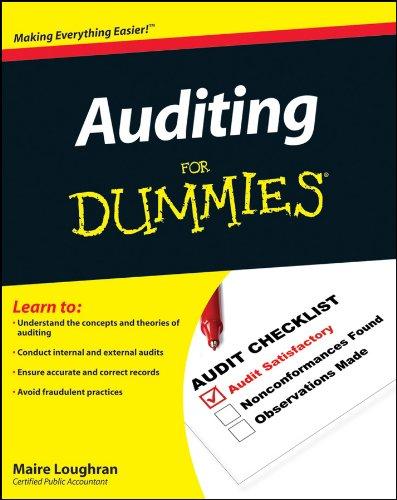Question
NOTE: This is one question, divided into three parts. Please answer my question completely and NOT partially. (1A) The production manager of Rordan Corporation has
NOTE: This is one question, divided into three parts. Please answer my question completely and NOT partially.
(1A) The production manager of Rordan Corporation has submitted the following quarterly production forecast for the upcoming fiscal year:
|
| 1st Quarter | 2nd Quarter | 3rd Quarter | 4th Quarter |
| Units to be produced | 9,000 | 7,000 | 7,500 | 8,400 |
Each unit requires 0.45 direct labor-hours, and direct laborers are paid $10.00 per hour.
Required:
1. Prepare the companys direct labor budget for the upcoming fiscal year. Assume that the direct labor workforce is adjusted each quarter to match the number of hours required to produce the forecasted number of units produced.
2. Prepare the companys direct labor budget for the upcoming fiscal year, assuming that the direct labor workforce is not adjusted each quarter. Instead, assume that the companys direct labor workforce consists of permanent employees who are guaranteed to be paid for at least 3,500 hours of work each quarter. If the number of required direct labor-hours is less than this number, the workers are paid for 3,500 hours anyway. Any hours worked in excess of 3,500 hours in a quarter are paid at the rate of 1.5 times the normal hourly rate for direct labor.
(1B) The direct labor budget of Yuvwell Corporation for the upcoming fiscal year contains the following details concerning budgeted direct labor-hours:
|
| 1st Quarter | 2nd Quarter | 3rd Quarter | 4th Quarter |
| Budgeted direct labor-hours | 10,200 | 9,300 | 9,600 | 10,400 |
The company uses direct labor-hours as its overhead allocation base. The variable portion of its predetermined manufacturing overhead rate is $4.75 per direct labor-hour and its total fixed manufacturing overhead is $70,000 per quarter. The only noncash item included in fixed manufacturing overhead is depreciation, which is $17,500 per quarter.
Required:
1. Prepare the companys manufacturing overhead budget for the upcoming fiscal year.
2. Compute the companys predetermined overhead rate (including both variable and fixed manufacturing overhead) for the upcoming fiscal year.
(1C) Pearl Products Limited of Shenzhen, China, manufactures and distributes toys throughout South East Asia. Three cubic centimeters (cc) of solvent H300 are required to manufacture each unit of Supermix, one of the companys products. The company now is planning raw materials needs for the third quarter, the quarter in which peak sales of Supermix occur. To keep production and sales moving smoothly, the company has the following inventory requirements:
- The finished goods inventory on hand at the end of each month must equal 3,000 units of Supermix plus 25% of the next months sales. The finished goods inventory on June 30 is budgeted to be 16,250 units.
- The raw materials inventory on hand at the end of each month must equal one-half of the following months production needs for raw materials. The raw materials inventory on June 30 is budgeted to be 81,375 cc of solvent H300.
- The company maintains no work in process inventories.
A monthly sales budget for Supermix for the third and fourth quarters of the year follows.
|
| Budgeted Unit Sales |
| July | 53,000 |
| August | 58,000 |
| September | 68,000 |
| October | 48,000 |
| November | 38,000 |
| December | 28,000 |
Required:
1. Prepare a production budget for Supermix for the months July, August, September, and October.
2. Prepare a direct materials budget showing the quantity of solvent H300 to be purchased for July, August, and September, and for the quarter in total.
Step by Step Solution
There are 3 Steps involved in it
Step: 1

Get Instant Access to Expert-Tailored Solutions
See step-by-step solutions with expert insights and AI powered tools for academic success
Step: 2

Step: 3

Ace Your Homework with AI
Get the answers you need in no time with our AI-driven, step-by-step assistance
Get Started


